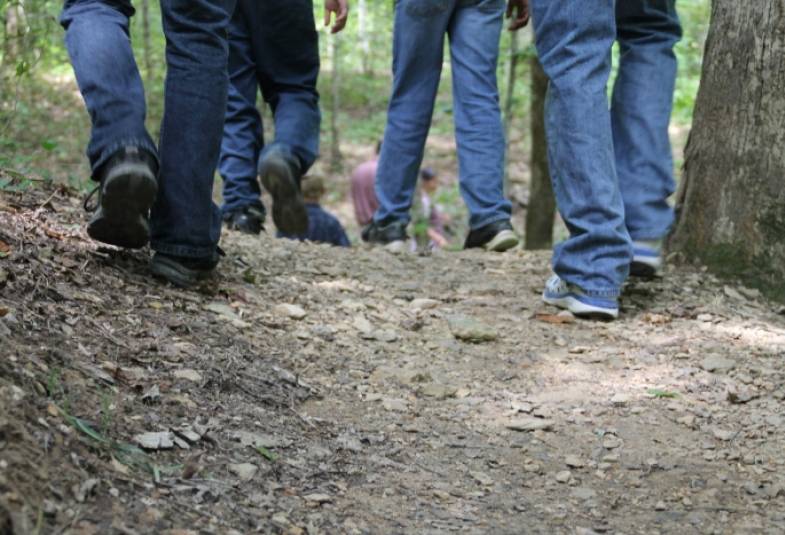18/03/2021

In 2020, many who had never thought of taking outdoor worship seriously were inspired to give it a go, prompted by safety considerations around gathering indoors. Worshipping outdoors isn’t however simply a response to the pandemic, there has been a growing movement towards outdoors worship against the background of the twin climate and biodiversity environmental crises, rooted in a desire to reconnect with God’s creation.
In wider society, environmental charities and Forest School are helping us to reconnect with nature, with initiatives such as the National Trust’s ‘50 things to do before you are 11 ¾’ proving popular. There is growing awareness that in order for individuals and society to take environmental considerations seriously, we need to love what we are seeking to protect.
Forest Church adds a spiritual dimension. The intent is to both enable participants to grow in love for God’s creation, and to grow in thankfulness towards the God who made it. Forest Church at its best engages with people who would be unlikely to attend indoors worship, with many saying that nature is their ‘spiritual’ place. It provides a framework within the Christian tradition around experiences that, using the term loosely, many would label as spiritual, as well as encouraging love for creation and environmental ethic.
Not just forests!
Forest Churches vary hugely and don’t need to meet in a Forest! Some are quiet and contemplative, others focus on children and families, with the energy, chaos and creativity that this brings. Many work in an intergenerational way, incorporating aspects both for children and families and for adults attending without parenting responsibilities. There is no right way to go about it - it all depends on local relationships and networks, and on what outdoor spaces are available as locations for worship. I’ve come across Welly Church, Muddy Church, Outdoor Church and Wild Church.
There are all kinds of good reasons for moving worship outside which is in a similar style to that which could happen in the church building, but that isn’t Forest Church. At the heart of a Forest Church gathering is actively choosing to engage with God’s creation, in awe, wonder and thanksgiving, and to make this the heart of worship.
Much is about noticing and appreciating – sometimes just exploring what is there, other times using resources such as spotter sheets and colour matching cards. Often the turning of the seasons are referenced, noting how nature lives out on an annual basis the death and resurrection that is at the heart of the Christian faith. Hope is profoundly illustrated for us, as we observe nature dying back each winter, trusting in the coming of spring (Romans 8.22-25). These prayers produced for Easter 2020 illustrate the different ways this might work in practice (link opens PDF).
What happens in a typical ‘service’?
In my own Forest Church, most gatherings involve starting together with some opening prayers, reference to the season and how it links to Christian themes, perhaps a bible reading though that may come later. We then explore in nature through whatever is the chosen core activity on that occasion, often walking as we explore. We re-gather and talk about what we have done and found, perhaps with a reading at this point. There may be time for each to wander individually to pray in a space, at some point there are some closing prayers, and a reminder to tread gently on God’s world as we return to our normal rhythm of life.
The environmental imperative
It is increasingly critical that Christians engage with environmental concerns as part of core discipleship, whether worshipping indoors or outdoors. There’s a much-neglected biblical imperative to tend God’s creation and an urgency with which the current environmental crises are presenting themselves. Given the urgency of the crisis and given the increased prominence within wider society, the church cannot expect to be taken seriously by faith explorers if they’re not modelling good practice in this area of life. A recent report published by Youthscape and Tearfund highlighted the prominence of environmental concerns with young Christians. This is no longer a fringe concern for keen ‘greenies’ but is increasingly mainstream.
This brings with it a challenge to all churches, indoors or outdoors, Fresh Expressions or with long history, to find their right path toward sustainable practice, living gently with respect to all God’s creatures, as together we praise our maker.
For those wanting to explore some more: